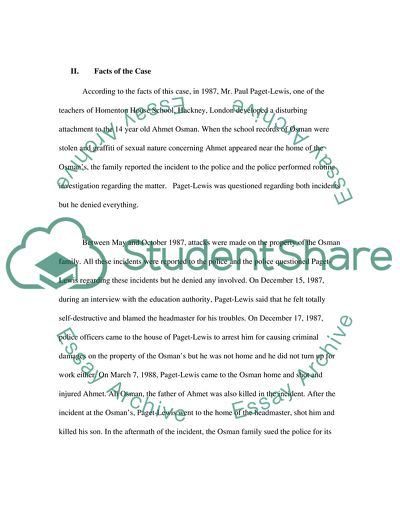Cite this document
(The Case of Osman Versus United Kingdom on the Law of Tort Essay, n.d.)
The Case of Osman Versus United Kingdom on the Law of Tort Essay. https://studentshare.org/law/1735749-discuss-the-actual-and-potential-implications-of-osman-for-the-law-of-tort
The Case of Osman Versus United Kingdom on the Law of Tort Essay. https://studentshare.org/law/1735749-discuss-the-actual-and-potential-implications-of-osman-for-the-law-of-tort
(The Case of Osman Versus United Kingdom on the Law of Tort Essay)
The Case of Osman Versus United Kingdom on the Law of Tort Essay. https://studentshare.org/law/1735749-discuss-the-actual-and-potential-implications-of-osman-for-the-law-of-tort.
The Case of Osman Versus United Kingdom on the Law of Tort Essay. https://studentshare.org/law/1735749-discuss-the-actual-and-potential-implications-of-osman-for-the-law-of-tort.
“The Case of Osman Versus United Kingdom on the Law of Tort Essay”. https://studentshare.org/law/1735749-discuss-the-actual-and-potential-implications-of-osman-for-the-law-of-tort.


